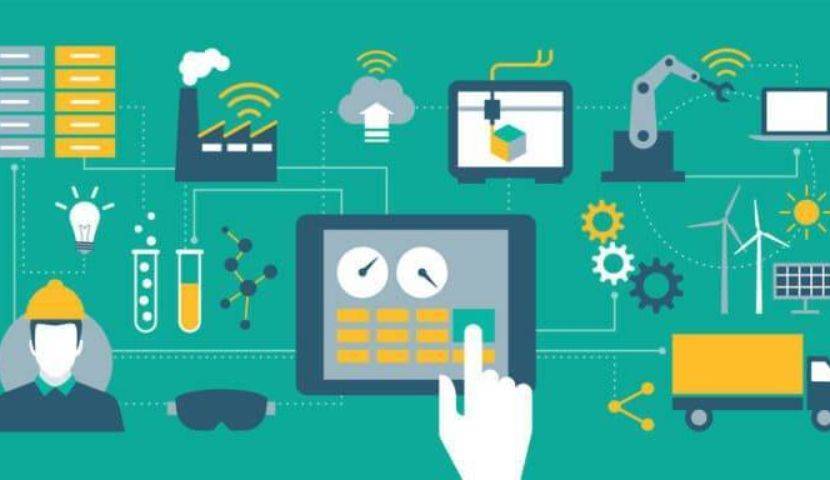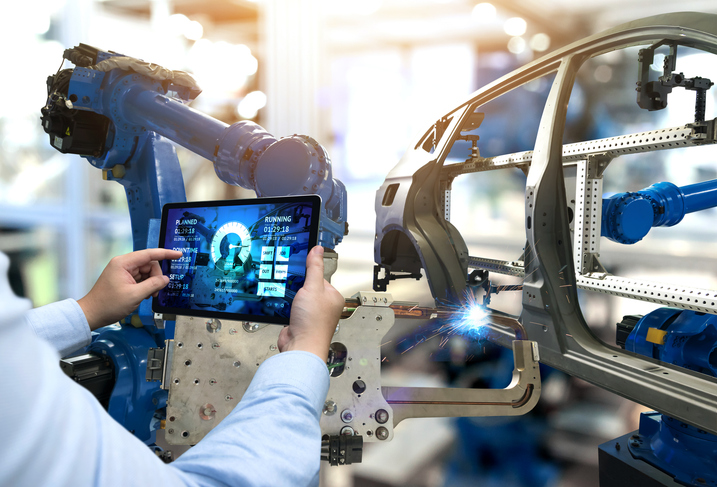As an independent ERP consulting firm, we see that Digital Transformation and Industry 4.0 have become almost buzzwords today. But they are more than a fleeting trend.
Industry 4.0, as the name implies, is widely thought to be the 4th industrial revolution. It’s the culmination of automation, big data, cloud computing, and connected machines.
With each of these areas maturing in their own right, it’s where they all collide that makes this 4th revolution so exciting. As with most transformations, it won’t happen overnight.
Most manufacturers will find themselves moving into this new era in smaller steps. We are already seeing this with some of the more complex manufacturers.

Looking at Industry 4.0
To look closer at Industry 4.0 impact on manufacturing and distribution, some background is in order.
Industry 4.0 is manifested in the ability to connect machines to the internet, each other, and to larger systems. It used to be that machines used PLC’s to report data to a manufacturing execution system. Today, sensors can be added to monitor almost any aspect of production.
The sensors are cheaper, more reliable, and can capture cycle times, units, temperature, pressure, and any other imaginable data point. They report production in real time much like PLCs of the past. But with so many other data points, shops have a new wealth of information.
It helps maintenance software understand the conditions that result in breakdown and become more predictive – preventing expensive breakdowns and repairs. It can also help systems run smoothly, adjusting individual machines to ensure inputs and outputs are kept in sync.
Cheaper optics and cameras can perform real time, in process quality checks on each and every unit produced – slowing production only when there is a real issue and in real time.
Sensors can also improve safety – informing operators when a machine is running too fast, or the oil is too hot.
A Renewed Focus on the Customer
Another aspect of Industry 4.0 is an ever-increasing focus on customers and experience. That’s a significant Industry 4.0 impact on manufacturing and distribution organizations.
Customers in all markets are demanding better, more personal experiences and
services.
Even in complex industrial manufacturing, there is room for improving customer experience and customer service.
Consider a recent example of a complex manufacturer producing industrial equipment. The final units now include dozens of sensors – monitoring all aspects of the equipment and its operating environment. The producer can access this data and provide their customer, the user, information proactively. They can suggest how to improve performance, or suggest an engineer come onsite for calibration.
Manufacturer or Service Provider?
This data allows the producer to become a service provider – increasing revenue and providing real value to their customers.
By integrating this data with traditional elements of enterprise asset management and field service, they can provide not only the product, but the service to sustain it, and help inform the repair/replace decision for their client.
Industry 4.0 will see manufacturers move from just producers, to becoming service providers, and ultimately trusted partners for their customers.
Industry 4.0 Impact Manufacturing and Distribution: Get Educated
We’ve only touched on a few key points when it comes to Industry 4.0 impact on manufacturing and distribution.
As an independent ERP consultant team, we put a priority on providing insight and education.
Looking for insight on how Industry 4.0 impacts manufacturing and distribution? Contact Ultra to arrange a free consultation.
The 7 Deadly Sins of ERP Implementation
Some mistakes are just bad strategic or financial decisions. Some are the inevitable consequence of situational or organizational factors. Some, however, are the result of process-oriented or people-centric choices – and are easily avoided. These are The Seven Deadly Sins of ERP Implementation.

Table of Contents
More ERP material...
Choosing a CRM System for Your Business
Data analytics holds the ability to highlight inefficient manufacturing processes and enable…
The Undeniable Benefits of Implementing ERP in Food and Beverage Manufacturing
Data analytics holds the ability to highlight inefficient manufacturing processes and enable…
Emerging Technologies in Manufacturing Driving Business Growth
Data analytics holds the ability to highlight inefficient manufacturing processes and enable…



